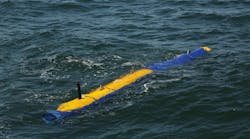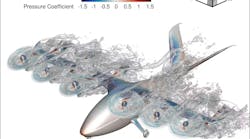SEATTLE, 10 Jan. 2012.Ethiopian Airlines executives have ordered from Aviation Partners Boeing, a Seattle-based joint venture of Aviation Partners Inc. and The Boeing Company, Blended Winglets for the company’s 767-300ER airplanes. Ethiopian Airlines personnel will install the winglets at the company’s maintenance facility at Bole International Airport in Addis Ababa. Initial installations, involving three aircraft, will commence in Feb. 2012.
Blended Winglet technology installed on a 767-300ER reduces fuel burn by up to 500,000 gallons per aircraft per year, while also reducing carbon dioxide emissions by over 5,000 tons per year, according to a spokesperson.
"Ethiopian Airlines has made the choice of purchasing winglets for our B767 because of the enormous performance and operating value they bring. The winglets will contribute greatly to our constant and comprehensive effort to continuously reduce our carbon footprint, through lower airport noise and emissions," explains Tewolde Gebremariam, CEO of Ethiopian Airlines.
"From an economics point of view, they will allow the airline to make substantial cost saving, through lower fuel burn, which is highly critical at a time when the industry as a whole is feeling the brunt of persistent high fuel prices, and also reduce engine maintenance cost,” Gebremariam adds. “Specifically from our high-altitude hub, the winglets will enhance our take-off performance and increase our payload and flight range, which means additional revenue for the airline."
767-300ER Blended Winglets are said to extend the range of the aircraft by as much as 320 nautical miles, or increase the payload of the aircraft by as much as 16,000 pounds. APB executives estimate that Blended Winglets have saved airlines worldwide more than 2.9 billion gallons of jet fuel to date.
"In 2001, Ethiopian Airlines was the first 737-700 operator worldwide to adopt Blended Winglet Technology. APB is now delighted to have this very experienced winglet operator also decide to add Blended Winglets to its 767-300ER fleet," says Patrick LaMoria, Aviation Partners Boeing vice president of sales and marketing.


